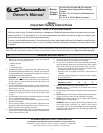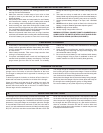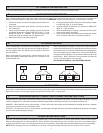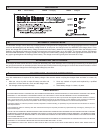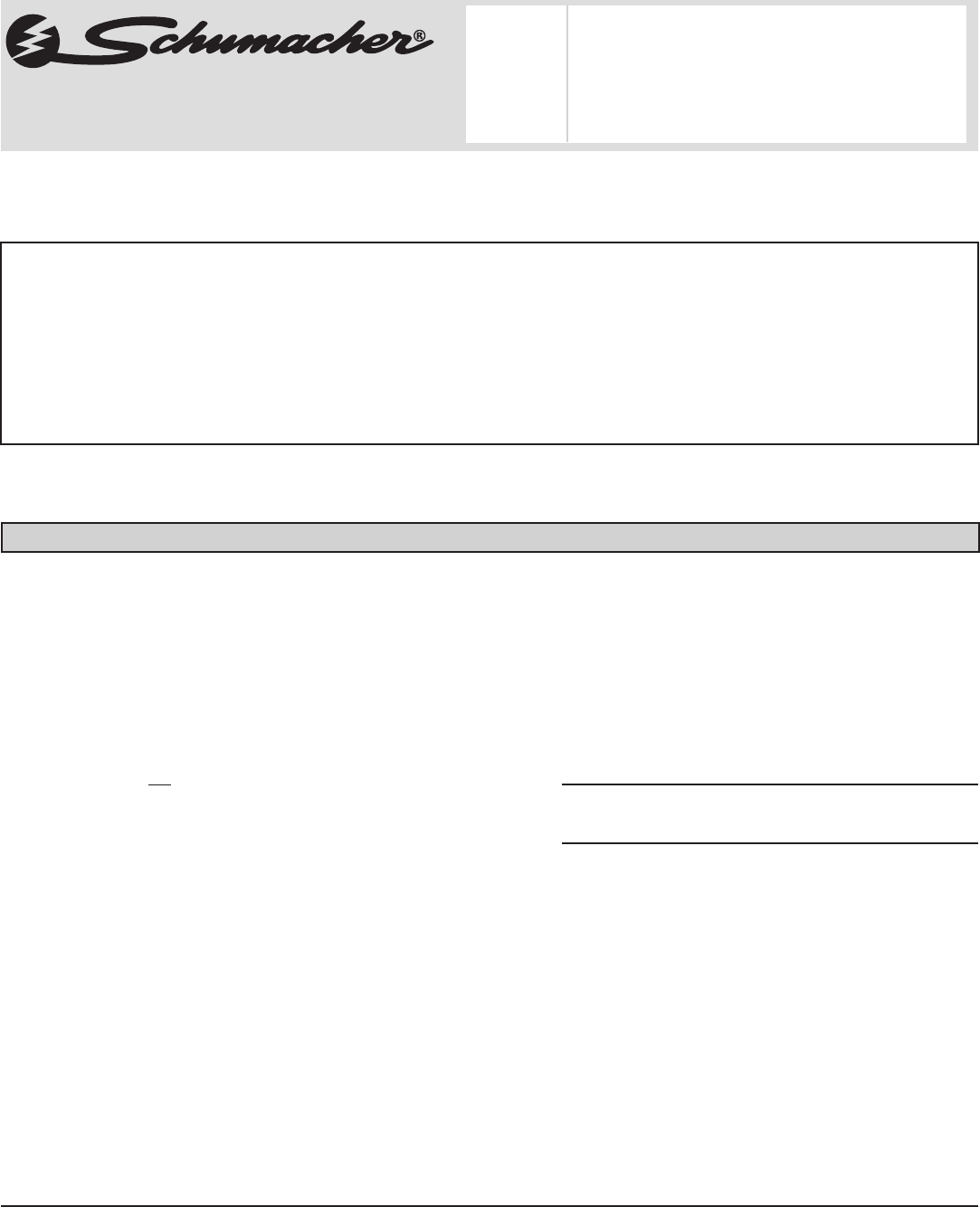
1
–Save–
Important Safety Instructions
WARNING – RISK OF EXPLOSIVE GASES
Working in the vicinity of a lead-acid battery is dangerous. Batteries generate explosive gases during normal
battery operation. For this reason, it is of utmost importance that each time before using your charger, you
read this manual and follow the instructions exactly.
To reduce risk of battery explosion, follow these instructions and those published by the battery manufacturer
of any equipment you intend to use in vicinity of battery. Review cautionary markings on these products and
on engine.
00-99-000777/0308
A. GENERAL BATTERY SAFETY
1. Before you use your battery charger, read and follow all
instructions and cautions printed on:
• BatteryCharger
• Battery
• Unitusingbattery
2. UsebatterychargeronFloodedWetCell,MaintenanceFree
andStarvedElectrolytebatteriesonly.Chargerisnotintended
to supply power to low-voltage electrical system other than for
charging and maintaining batteries.
WARNING: Do not use battery charger for charging dry-cell
batteries that are commonly used with home appliances.
These batteries may burst and cause injury to persons and
damage to property.
3. Useonlyattachmentsrecommendedorsoldbymanufacturer.
Useofnon-recommendedattachmentsmayresultinre,
electric shock, or injury.
4. When disconnecting the battery charger, pull by the plug not
by the cord. Pulling on the cord may cause damage to cord
or plug.
5. Locate battery power cord so it cannot be stepped on, tripped
over, or subjected to damage or stress.
6. Do not operate charger with damaged cord or plug. Have cord
replaced immediately.
7. Do not operate charger if it has received a sharp blow, been
dropped, or otherwise damaged in any way. Take it to a qua-
liedprofessionalforinspectionandrepair.
8. Donotdisassemblecharger.Takeittoaqualiedprofessional
when service or repair is required. Incorrect reassembly may
resultinelectricshockorre.
9. To reduce risk of electric shock, unplug charger from outlet
before attempting any maintenance or cleaning.
10. Do not use an extension cord unless absolutely necessary.
Useofanimproperextensioncordcouldresultinreorelectric
shock. If an extension cord must be used, make sure that:
• Pinsonplugofextensioncordarethesamenumber,size,
and shape as those of plug on charger.
• Extensioncordisproperlywiredandingoodelectrical
condition.
• WiresizeislargeenoughforACampereratingofcharger,
asspeciedbelow:
Length of cord (feet): 25 50 100
AWG size of cord: 16 14 12
11. Alwayschargebatteryinawell-ventilatedarea.
NEVER operate in a closed-in or restricted area without
adequate ventilation.
12. LocatechargerasfarawayfrombatteryasDCchargercables
permit.
13. NEVERchargeafrozenbattery.Ifbatteryuid(electrolyte)is
frozen,bringintoawarmareatothawbeforecharging.
14. NEVER allow battery acid to drip on charger when reading
specicgravityorllingbattery.
WARNING: Battery chargers get hot during operation and
musthaveproper ventilation.Air needs to flowaround
thecharger.Donotsetonammableitemslikecarpeting,
upholstery, paper, cardboard, etc. Will damage leather and
melt plastic and rubber.
Owner's Manual
WARNING: Handling the cord on this product or cords associated with accessories sold with this product, may expose you to lead, a
chemicalknowntotheStateofCaliforniatocausecancerandbirthdefectsorotherreproductiveharm.Wash hands after handling.
SCHUMACHER ELECTRIC CORPORATION
801 BUSINESS CENTER DRIVE • MOUNT PROSPECT, ILLINOIS 60056-2179
Send Warranty Product Repairs to: 1025 E. Thompson, Hoopeston, IL 60942-0280
CallCustomerServiceifyouhavequestions:1-800-621-5485
Battery
Charger
Models:
SS-15A1-OB, SS-15A2-OB, SS-15A3-OB
Fully Automatic Onboard Marine Battery
Charger
For One , Two or Three 12-Volt Batteries at
15 Amps
For 12, 24 or 36 Volt Battery Systems



